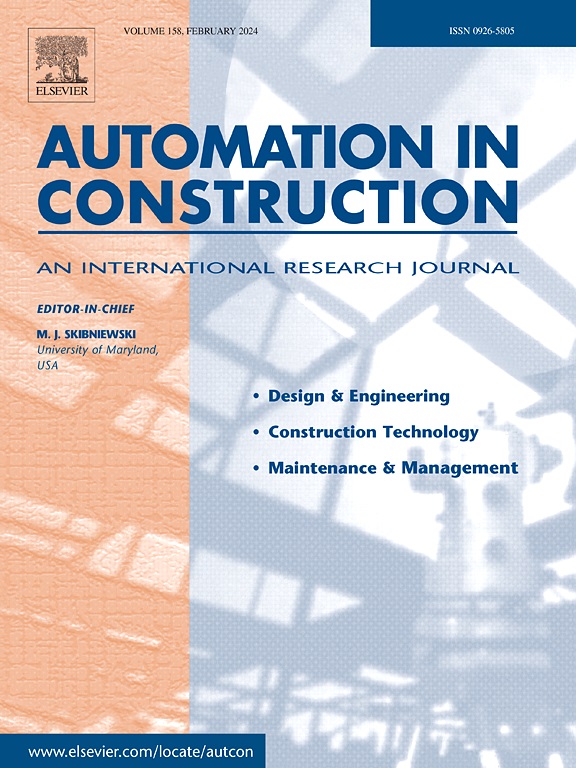Safety-constrained Deep Reinforcement Learning control for human–robot collaboration in construction
IF 9.6
1区 工程技术
Q1 CONSTRUCTION & BUILDING TECHNOLOGY
引用次数: 0
Abstract
Worker safety has become an increasing concern in human–robot collaboration (HRC) due to potential hazards and risks introduced by robots. Deep Reinforcement Learning (DRL) has demonstrated to be efficient in training robots to acquire complex construction skills. However, neural network policies for collision avoidance lack theoretical safety guarantees and face challenges with out-of-distribution scenarios. This paper proposes a biomimetic safety-constrained DRL control system, inspired by vertebrate decision-making systems. A neural network policy serves as the ”brain” for complex decision-making, while a reference governor layer functions like the spinal cord, enabling rapid responses to environmental stimuli and prioritizing safety. Theoretical safety guarantees related to robot dynamics including torque, joint angle, velocity, and distance were analyzed. Experimental results demonstrate that the proposed method achieves a 0% collision rate, providing a safe HRC mode in both static and dynamic construction scenarios.
基于安全约束的建筑人机协作深度强化学习控制
由于机器人带来的潜在危险和风险,工人的安全问题在人机协作(HRC)中日益受到关注。深度强化学习(DRL)在训练机器人获得复杂的构造技能方面已被证明是有效的。然而,神经网络避碰策略缺乏理论上的安全保证,并且在非分布情况下面临挑战。本文提出了一种受脊椎动物决策系统启发的仿生安全约束DRL控制系统。神经网络策略充当复杂决策的“大脑”,而参考调控层的功能类似于脊髓,能够对环境刺激做出快速反应,并优先考虑安全性。分析了机器人力矩、关节角、速度、距离等动力学参数的理论安全保证。实验结果表明,该方法实现了0%的碰撞率,在静态和动态建筑场景下都提供了安全的HRC模式。
本文章由计算机程序翻译,如有差异,请以英文原文为准。
求助全文
约1分钟内获得全文
求助全文
来源期刊

Automation in Construction
工程技术-工程:土木
CiteScore
19.20
自引率
16.50%
发文量
563
审稿时长
8.5 months
期刊介绍:
Automation in Construction is an international journal that focuses on publishing original research papers related to the use of Information Technologies in various aspects of the construction industry. The journal covers topics such as design, engineering, construction technologies, and the maintenance and management of constructed facilities.
The scope of Automation in Construction is extensive and covers all stages of the construction life cycle. This includes initial planning and design, construction of the facility, operation and maintenance, as well as the eventual dismantling and recycling of buildings and engineering structures.
 求助内容:
求助内容: 应助结果提醒方式:
应助结果提醒方式:


